Ephemeral Streams – What They Are And How They Occur
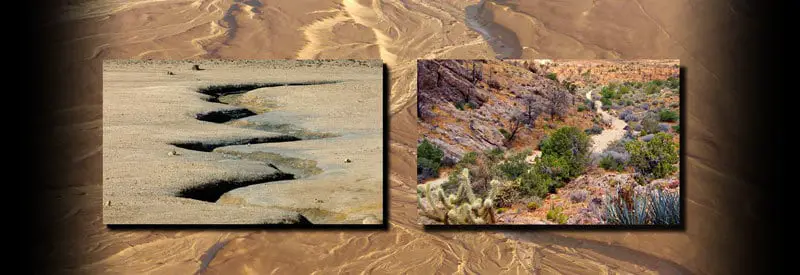
Inland waterways of all sizes play a crucial role in providing a water supply to humans, fauna & flora while replenishing larger bodies of water. This includes the seemingly insignificant ephemeral stream.
An ephemeral stream is defined as a temporary stream that only flows for brief periods as a direct result of precipitation mainly occurring in arid and semi-arid regions with infrequent rainfall. It differs from intermittent streams in terms of not having a clearly defined physical channel or bed.
Not all rivers and streams continuously flow throughout the year. Some of them are seasonal, and some only flow during specific events. No matter what their size or frequency, they all form part of the Water Cycle that distributes and cycles water around the planet.
One such temporary stream is called an ephemeral stream. It does not flow often and only for a short duration during specific occurrences. Yet, it is still just as an important source of water as any extensive permanent river system.
This post examines what an ephemeral stream is, how it forms, and how it differs from other types of streams and rivers.
Ephemeral Stream Definition
Most major river systems and larger streams flow throughout the year, meaning they are perennial. (Like the Rhine in Europe, the Amazon in South America, and the Nile in Africa.) An ephemeral stream, though, is not only transitory but is not even a seasonal occurrence.
To be able to describe how and why this type of stream form, one needs to gain a clear understanding first of what precisely an ephemeral stream is:
What Is An Ephemeral Stream?
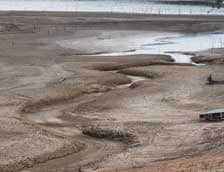
An ephemeral stream is a temporary stream that only flows for brief periods as a direct result of precipitation, which mainly occurs in arid and semi-arid regions where rainfall occurs infrequently. It differs from intermittent streams by not having a clearly defined physical channel or bed.
The word "ephemeral" is derived from the 16th Century Greek word "ephēmeros," which aptly means "lasting for a very short time." And it is the brief occurrence of an ephemeral stream that is its most defining characteristic.
Since these streams occur for such a brief period, it does not have the time to carve out a deep and wide channel, as is the case with a perennial river. It also occurs in predominantly dry regions, where the groundwater table forms much deeper below the surface.
As a result of these two factors, ephemeral streams occur above the groundwater table, compared to more permanent streams and rivers, which riverbeds lie below the water table. The significance of the groundwater table height will become clear in a later section.
How Ephemeral Streams Formed
In arid or semi-arid regions, precipitation occurs very infrequently. As a result, when a large enough amount of rainfall does occur, it often forms a temporary stream on the surface.
The stream can create a new path or follow an existing channel (also called a dry wash) established by previous occurrences of ephemeral streams.
The paths these streams follow can link up with larger networks of intermittent or perennial streams and rivers.
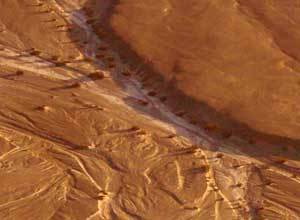
They can also continue to flow for a short distance before evaporating completely without reaching any significant point or being absorbed into the soil to form groundwater.
Ephemeral streams flow for a limited time and dry up quickly, only leaving a dry stream bed behind. These dried-up channels are sometimes more accurately described as arroyos, which are synonymous with the arid and semi-arid areas where ephemeral streams occur.
It is important to note that the ephemeral stream and the channel (arroyo) it flows in are not the same things. The stream itself is the actual flow of water that is transitory, while the channel it flows in remains a permanent fixture of the landscape.
Importance Of Ephemeral Streams
It is only natural to conclude that ephemeral streams play an insignificant role in contributing to the Water Cycle and have any other beneficial influences on the environment. Such a conclusion can not be further from the truth.
These streams play an essential role in supplying fresh and maintaining existing resources in at least three different ways:
1) Fresh Water Supply To Perennial Water Networks
Even though ephemeral streams only flow during or after a spell of rain, the combination and frequency of these streams have a huge impact. In fact, they contribute the vast majority of freshwater to the entire river network in arid and semi-arid regions.
For example, 95% of all streams in the Arizona Dessert are seasonal, of which a substantial amount are ephemeral. Even in wetter regions with frequent rainfall, it is estimated that more than 50% of the total stream network consists of temporary streams.
2) Supply Of Fresh Sediment To Downstream Regions
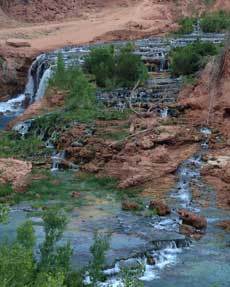
During extended dry spells, dried-up stream beds (arroyos) builds up a layer of soil, which nutrient content hasn't been depleted by vegetation growth.
The organic matter created by dead animals and insects, as well as the remains of dead plants, also accumulate in arroyos, further enriching the nutrient content of the soil.
When a spell of rain causes an ephemeral stream to flow, it carries this nutrient-rich soil downstream, where it gets deposited on riverbanks and the surrounding areas, replenishing the land with much-needed fresh sediment.
3) Maintenance And Replenishment Of Groundwater Tables
As the arid and semi-arid regions, where ephemeral stream occurs, don't contain much moisture, the groundwater tables are situated much further below the surface than in wetter areas with an abundance of rain.
When a substantial amount of rain falls, it allows ephemeral streams to contain a large enough volume of water to have some of it absorbed by the ground to replenish its deep water tables.
It can also flow far enough to connect with more permanent (perennial) river networks downstream. It not only supplies these systems with additional water but also assists in maintaining and replenishing their groundwater tables as well.
The Difference Between Ephemeral And Intermittent Streams
Some confusion exists among observers about the difference between ephemeral streams and intermittent streams since they are both regarded as temporary streams.
Ephemeral streams have already been clearly defined as temporary streams that only flow as a direct result of precipitation. The depth of their groundwater tables also means that they can't access this water source to sustain their flow in any way.
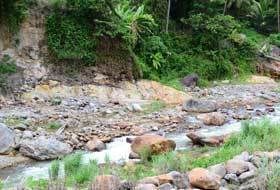
Intermittent streams, however, differ in more than one way. They are often seasonal, meaning that although they don't flow throughout the year, they receive a steady supply of water during the rainy season, which allows them to flow for sustained periods.
They also have deeper and more prominently defined river beds, combined with shallower groundwater tables as a result of the availability of more water. It allows the river beds to lie below the water table, allowing them to access groundwater to sustain their flow.
Conclusion
What became clear through this article is how a seemingly insignificant occurrence can play a significant role in a much more extensive network.
An ephemeral stream is not only temporary but only flows for a brief period during or after a spell of rain. Yet, in many regions, they account for the vast majority of water supply to major river networks, enabling them to flow throughout the year.
This article explained what an ephemeral stream is, how it forms, and its importance to larger, more perennial water networks. It also addressed and clarified the difference between an ephemeral and intermittent stream.
Never miss out again when another interesting and helpful article is released and stay updated, while also receiving helpful tips & information by simply clicking on this link .
Until next time, keep your eye on the weather!
